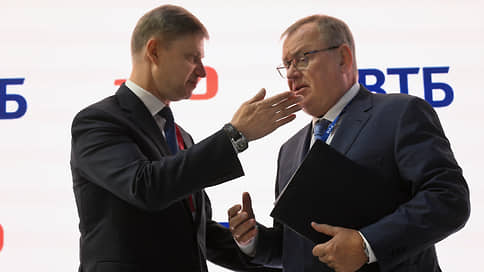Russian Railways and VTB Factoring completed the largest deal with CFA, the volume of placement is 15 billion rubles.
[ad_1]

Russian Railways and VTB Factoring completed the largest deal with digital financial assets (DFA) on the Russian market. The volume of placement amounted to 15 billion rubles, exceeding by several times the total volume of all previous placements. However, both this transaction and most of the previous ones were tested and are not a tool available to a wide range of investors. The development of the industry is hindered by the lack of a secondary market and insufficient legal practice in resolving disputes.
On June 16, SPIEF announced the largest deal with CFA. The issuer was Russian Railways, the sole investor was VTB Factoring. The placement took place for the first time on the site of Distributed Registry Systems LLC (MasterChain platform). The volume of the issue amounted to 15 billion rubles, which exceeded by several times the CFA issues placed so far. The circulation period of the CFA will be six months, the yield is the key rate + 0.95% (that is, at the moment – 8.45% per annum). The previous largest placements were on the site of Atomayza (for 1 billion rubles) and Alfa-Bank (750 million rubles).
Currently, there are seven organizations in the register of information system operators (platforms where DFAs can be placed). Two of them – Tokeny LLC (a subsidiary of PSB, the Tokeon platform) and Eurofinance Mosnarbank – entered the register this week. To date, more than six dozen CFA issues have been announced, some of which are in the process of placement. According to Kommersant’s estimate, excluding the last placement, the volume of announced issues amounted to 4.58 billion rubles, but the placement volume turned out to be less. In particular, according to the Central Bank, CFAs worth 728 million rubles were placed in 2022, while the announced volume of issues was 1.65 billion rubles.
“CFA is distinguished by the high manufacturability of the process and the speed of obtaining funding. In modern conditions, the role of these advantages is becoming decisive, ”explained Oleg Belozerov, chairman of the board of Russian Railways (quote from a press release). With the CFA, the first transaction saves the participants time compared to the usual contractual process, the process of issuing, repurchasing and repaying the CFA takes place at lightning speed and without additional financial costs, VTB explains. The last time Russian Railways entered the public borrowing market was more than a year ago. At the end of April last year, that is, during the period of increased rates, the company collected applications for two five-year issues for 25 billion rubles. in just one hour without premarketing.
At the same time, significant participation in transactions with CFA of factoring companies, both in the person of the issuer (Sberbank Factoring, Sovcombank Factoring, Global Factoring Network Rus), and in the person of the investor (VTB Factoring), does not apply to this direction of financial services. “There are no operational challenges inherent in factoring operations in the deal,” explains Dmitry Shevchenko, executive director of the Association of Factoring Companies. “Most of the CFA issues in which the factors participated are unsecured and are more like lending than factoring,” notes a Kommersant interlocutor in one of the companies. In his opinion, CFA can be built into a factoring transaction, but for small transactions (up to 50 million rubles), the fees charged can “significantly affect the rate at which companies will offer financing.”
VTB is considering DFA, among other things, for financing SMEs that are suppliers of large debtors. “The main prospects for using this instrument are: the short-term funding market (up to one year), partial replacement of bank lending in the SME segment with CFA issues, structural products (including those linked to the cost of goods or any quotations, primarily precious metals or the cost of a square meters of housing) and securitization of various types of assets,” adds Pavel Kashitsyn, director of structured finance ratings at Expert RA.
In general, as Mr. Shevchenko notes, “the instrument, options for issuance and turnover, and the investor base are being tested.” It should be taken into account that “the secondary market for such instruments is still unavailable,” he points out. The current difficulties in using DFAs are related to the low liquidity of this instrument due to the large number of DFA issuing platforms that do not have the property of interoperability, and the still insufficient legal practice of resolving disputes related to issuing DFAs, including the provision of collateral for such instruments, notes Pavel Kashitsyn.
[ad_2]
Source link





